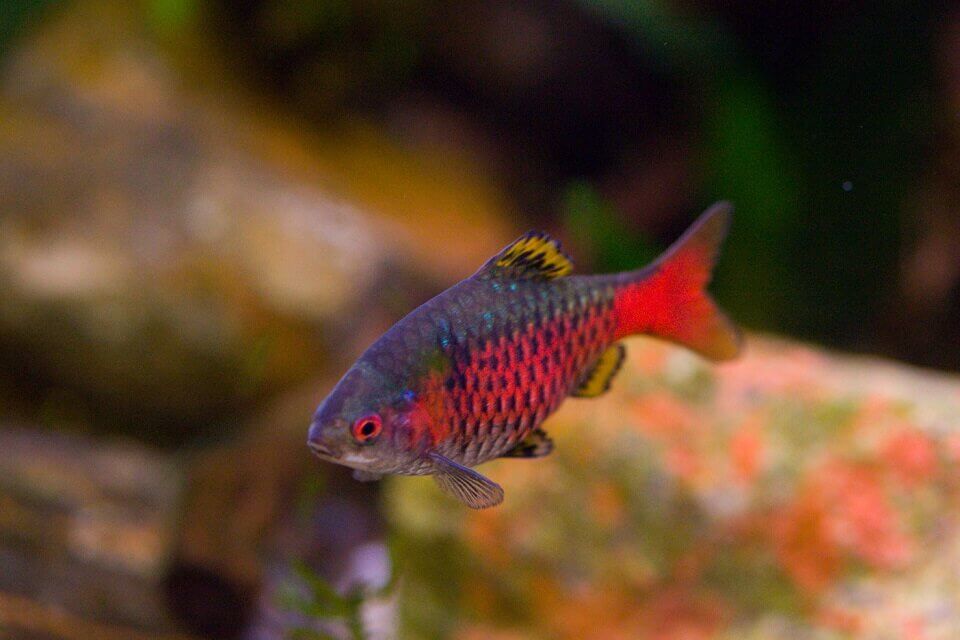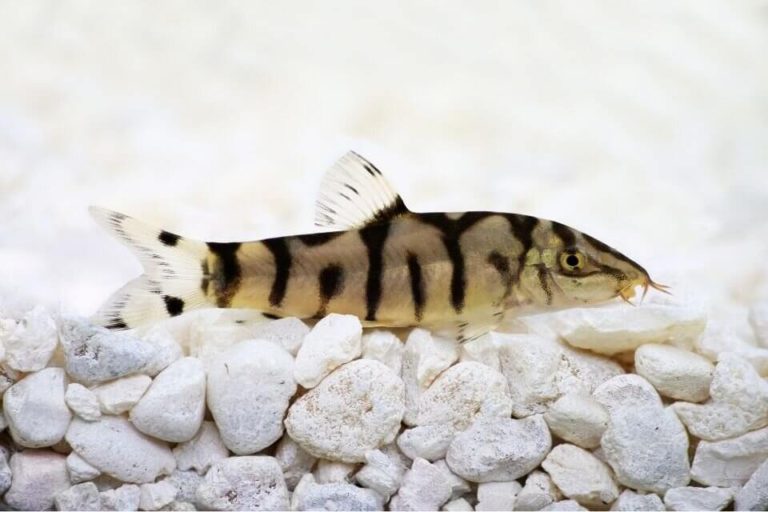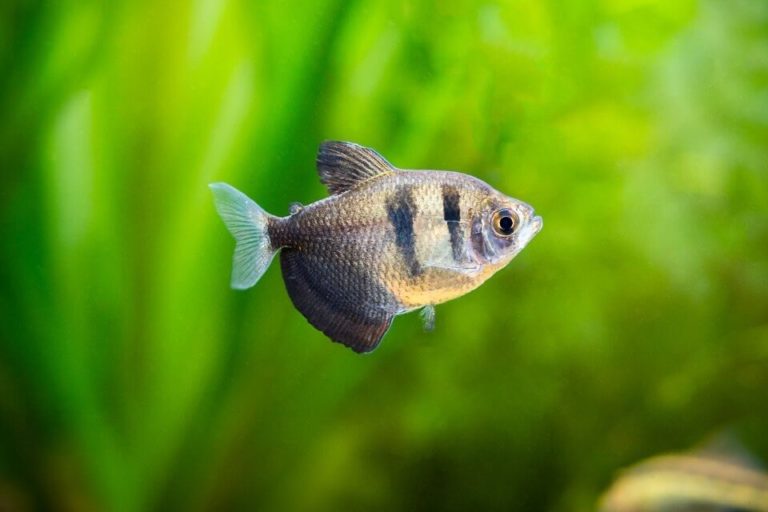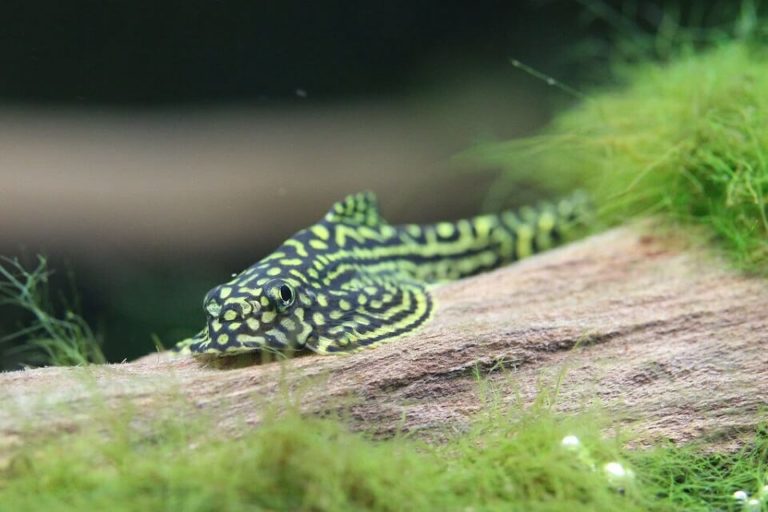Complete Odessa Barb Care Guide and Species Profile – Diet & Breeding

Odessa Barb is an interesting freshwater fish species that you can always consider because it has very bright colors that give your aquarium a stunning look.
It is also known as one of the colorful Barbs and it is an aquarium favorite to most people. You can easily tell the difference between the male and female as far as Odessa Barb is concerned unlike it is the case with many other species of fish.
The easy understanding of the gender differences between the male and the female makes breeding a relatively easy process. They can also survive in a wide range of water conditions and hence it is an excellent choice for beginners.
This Odessa Barb care guide will give descriptions of how to breed them, feed them, and take good care of them for the best results.
| Quick Facts: | |
|---|---|
| Common Names : | Odessa Barb |
| Origin : | Tropical waters in South Asia |
| Family : | Cyprinidae |
| Scientific Name : | Pethia padamya |
| Care Level : | Easy |
| Temperament : | Peaceful |
| Social : | Schooling fish |
| Diet : | Omnivores |
| Size (average) : | Up to 3 inches |
| Lifespan : | 3 to 5 years |
| Breeding : | Egg layer |
| Minimum Tank Size: | 30 gallons |
| Tank Environment : | Freshwater , Sandy or gravel substrate, Lot of Plants, Lot of hiding places, Rocks |
| Temperature : | 70 – 79 °F (21 – 26 °C) |
| Water Hardness : | 4 – 10 dKH |
| Water pH Level : | 6.0 – 7.5 pH |
Species Overview
Odessa Barbs which are scientifically known as Pethia padamya originate from freshwater bodies in the South Asia region.
In South Asia, these fish are mostly found in Myanmar but you can also find them in nearby countries such as China, India, Nepal, Bangladesh, Bhutan, and Thailand.
The name “Odessa Barb” came from Ukraine, the place where they first thrived under the hands of the fishkeeping community. These fish species usually live in tropical waters that have varying conditions.
They do not live in deep waters and hence they are mostly found in the shallow ends of rivers and streams. They live in slightly acidic and generally clear waters that are rich in aquatic plants.
In their natural habitat, they usually prefer to stay at the base near the substrate especially when they are looking for food.
The water currents in the streams and the rivers where these fish live are usually moderate which helps them to navigate and move around with ease. These fish are schooling species that mostly stay in groups.
They are also very active and when you place them in a tank, they will want to navigate the tank at every level.
Origin, Distribution, and Availability
As highlighted above, Odessa Barbs originate from South Asia, particularly in Myanmar. In their native habitats, they live in freshwater bodies such as ponds and rivers.
In Myanmar, this species was found on the upper side of Anisakan Falls and the lower side of the Chindwin River to be more specific.
From the area of their origin, these fish have now been distributed in many places especially after they grew in popularity as one of the best species for the aquarium hobby.
While it might be difficult to find Odessa Barb for sale in your local pet stores, you can make arrangements with the breeders to order them for you. That might require you to pay some upfront deposit but it will ultimately be worth it.
Appearance and Colors
The beautiful appearance of Odessa Barbs is what initially attracts aquarists all over the world. Odessa Barbs have an oval body shape that is stretched from the sides.
They have large scales and lateral lines which are not complete. They are generally light brown but their backs are green, abdomens are white and their sides are silver in color.
In addition, they have black spots on their pectoral and tail fins which are more distinct and visible in males than females.
Also, Odessa Barbs fish have red-brown stripes but these stripes usually turn bright red in males when they mature sexually. The bright red stripes in males start from the head and stretch horizontally to the tail.
On the other hand, when the females mature sexually, they develop more visible and distinct silver and pink colors, and black spots on the pectoral fins.
When it comes to breeding, males display more intensified colors than their female counterparts and hence it becomes so easy to spot the males. Both males and females usually have almost equal body sizes with a slight difference where the males have slender bodies.
The stunning colors of Odessa Barbs fish and their movement in unison make them fun to watch. Their fins are shaped and adapted for speed. Their dorsal fins are pyramid-shaped and their caudal fins are shaped like a long fork to give them the power needed for movement.
Odessa Barb Size
When fully grown and mature, Odessa Barb size usually has an average of about 3 inches in length. However, they can also reach a length of 4 inches under certain circumstances.
The factors that come into play to influence the size of Odessa Barb are genetics and the quality of care accorded to them. However, the body shape of a female is round because it has more flesh in the belly region.
The female Odessa Barb size is a little larger than the male fish.
Lifespan
Odessa Barbs usually have a lifespan of between 3 and 5 years. However, you can extend the upper bound by at least one year or two if you focus on giving your fish quality care.
Quality care involves proper water conditions and a good diet as well as compatible tank mates. Odessa Bards have longer lifespans in the wild which is impossible to reach in a captivity environment.
Behavior and Temperament
Odessa Barbs are peaceful species and very active. Their peaceful nature and activeness are a combination that makes them even more popular.
However, at certain times Odessa Barbs will become aggressive. Such instances are when they are kept singly or in groups of less than five. They become aggressive at such a time due to the feeling of nervousness.
Another instance of when they can be aggressive is when they are breeding although showing aggression is not that common.
During breeding, aggression occurs when some males chase other males to show off to the females. The fights and the showoffs do not last for long and hence that aggression is not an issue of great concern.
Nevertheless, Odessa Barbs will mostly mind their own business and focus on entertaining themselves. They usually roam around the aquarium in groups, an activity that is very impressive to observe.
Odessa Barb Care
Taking good care of Odessa Barbs is not a difficult task and hence no one should feel intimidated by it. That is because keeping Odessa Barbs is friendly and easy even to beginners and since the requirements are not very intense or strict, then there are no serious challenges.
The secret of giving your Odessa Barbs the best care is doing the basics of what is required and then focus on consistency.
However, you should not neglect these fish just because they are hardy or because they require low maintenance.
Lack of proper care will make your fish suffer. For that reason, therefore, ensure that the water requirements are met, they are fed with healthy and adequate food, and they are checked well in case of diseases.
– Odessa Barb Tank Size
Tank size is the first thing that you have to get right when taking care of Odessa Barbs.
The minimum recommended tank size for keeping your Odessa Barbs is one that measures 30 gallons and if larger the better. In the tank of that capacity, you should keep Odessa Barbs in groups of 5 to 6 fish.
The reason for the large tank size is because Odessa Barbs are usually very active and hence if there is an extra space your fish will appreciate having it.
Some aquarists have argued that if your fish get an adequate space by sticking to 30 gallons tanks or larger, their lifespan will prolong and hence they will live longer lives compared to those with restricted and small spaces.
– Tank Setup
When setting up the tank for your Odessa Barbs, it is recommended that you try to mimic their natural habitat.
Their natural habitat contains certain water conditions, substrate, and light conditions, all of which have to be right for your fish to thrive.
Plants in your aquarium are particularly very important as long as this species of fish is concerned and hence they should always be the number one priority.
In their natural habitat, these fish usually use vegetation as their hiding places whenever they require privacy. There are many options when it comes to choosing the best plants to include in your aquarium.
Most aquarists, however, have experimented with Hornwort and Water Wisteria and found them to be the best plants. You should not however limit yourself to the two plants only since you can experiment with more options.
A combination of plants that grow through the whole water column and floating plants is the best. The floating plants help to diffuse the light and hence the tank has more of a natural feel.
Diffusion of light is necessary since Odessa Barbs usually prefer dimmer light instead of too much brightness.
The filtration of water in the tank should be moderate to high since these fish usually enjoy an environment with water movement similar to the one in their natural habitat.
Also, you can add rocks and driftwood to the tank while preserving a space for the fish to swim. However, always keep in mind that the tank should not be too cramped since that might make your fish stressed.
– Water Conditions and Parameters
Odessa Barbs do not require too many strict water conditions since the range of conditions that you have to maintain is pretty easy for you to work with.
These water conditions make Odessa Barbs low-maintenance fish, especially for experienced aquarists. Keeping the water conditions just requires you to have consistency at all times.
The water should have temperatures ranging from 70 to 79 degrees Fahrenheit (21 to 26 °C) and the water acidity level should be between 6 to 7.5 pH.
Besides, the water hardness should be maintained between 4 to 10 dKH. To ensure that these conditions are maintained within the right ranges it is good to use trusted test kits, especially for beginners.
However, the use of aquarium water test kits can be minimized as one gains more experience.
- Water temperature: 70 – 79 °F (21 – 26 °C)
- Acidity: 6.0 – 7.5 pH
- Water hardness: 4 – 10 dKH
– Suitable Aquarium Plants
Some aquatic plants have been experimented with by aquarists and found to be the most suitable to plant in your aquarium.
Such plants include Hornwort, Water Wisteria, and Anubias. However, you can also try other aquatic plants in your wide range of options. It is worth consider floating aquarium plants since it increases the swimming spaces in the tank.
– Possible Diseases and Prevention
There are no specific diseases that attack Odessa Barb since it’s a hardy fish and hence not susceptible to unique diseases.
However, just like other freshwater fish, Odessa Barbs are prone to itch which presents itself as white spots. You can prevent the itch by ensuring that the tank conditions are right and by adding a medication that prevents it.
If you do not prevent or cure your fish of the itch, they can eventually die.
That means, it is your responsibility as an aquarist to check any signs of sickness from your fish and act quickly if something raises the alarm. Some of the signs of sickness include refusal to eat, odd behavior, visible wounds and spots, and lack of energy.
Once you confirm some or all of these signs, it is good to consult your vet and quarantine the infected fish to a different tank so that the disease does not spread to the healthy fish.
Besides, you are supposed to act immediately by treating your fish with the right recommendations from the experts. Proper care significantly reduces the chance of diseases.
You can give your fish quality care by maintaining proper tank conditions and by feeding them the right diet.
Where can you find Odessa Barb for Sale?
You might find Odessa Barb for sale in some pet stores near you. However, they are not always available, and you need to find reputed breeders who breed Odessa Bard for sale.
If you talk to your hometown aquarium pet stores to make arrangements with their supplier then you will be able to get some. Also, it is worth looking for a reputed online fish pet supplier who carries Odessa Barb for sale.
Average Odessa Barb Price
Odessa Barbs are affordable and anyone can buy them without too much straining. They cost between $2 and $7 and the prices will depend on your region or the country.
If you buy more of them at the same time, they will cost you less than buying one at a time.
Odessa Barb Diet and Feeding
It is extremely essential to feed your Odessa Barbs with a different variety of food to ensure that they get the best nutrition to thrive and fight diseases. They should not be kept without food for long since they are highly active.
Since they are omnivorous, you can feed them with foods such as live worms, insects, daphnia, lettuce, tropical flakes, and mini pellets.
We recommend feeding them 2 to 3 times per day but try not to overfeed. Make sure you clean the leftovers to ensure they will not affect the water quality of the tank.

Odessa Barb Tank Mates
Due to their peaceful nature, you can keep Odessa Barbs with many other tank mates that are similar in terms of their aggression. They can easily get along with any other non-aggressive fish.
Some of the best Odessa Barb tank mates include:
- Cherry Barb
- Neon Tetra
- Ember Tetra
- Apistogramma
- Harlequin Rasbora
- Bristlenose Pleco
Gender Differences
The male and the female of Odessa Barbs have just a few differences in their body size and shape.
The females are much bigger compared to their male counterparts and they tend to have a rounded body shape. The males, on the other hand, have a smaller size but with brighter colors than their female counterparts.
Odessa Barb Breeding
The breeding process is pretty easy because identifying and differentiating the male from the female Odessa Barb is very simple. A separate breeding tank would be recommended.
This is unlike other species of fish where you have to observe closely for you to differentiate them. When you want to breed them, it is important to ensure that the females are double the number of males in the tank.
When breeding, they will cease to move in groups and start moving in pairs where the females lay eggs and the males fertilize them.
Once the eggs are laid and fertilized, separate the adults from the breeding tank so that they do not feed the eggs. The eggs will then hatch in a couple of days.
After hatching, you can feed the young ones with powdered food and brine shrimp for their faster growth.
Are Odessa Barbs Hardy?
Yes. Odessa Barbs are hardy since they can withstand a wide range of water conditions unlike many other species of fish.
However survival is different from thriving and if you want them to thrive, it is good to keep them in tanks with vegetation and slightly acidic waters.
Are Odessa Barbs Aggressive?
Although Odessa Barbs tend to be peaceful most of the time, there are some instances when they can show aggression.
One instance is when some males fight other males in the aquarium when trying to dominate and showing off to the females. Odessa Barbs also tend to attack some fish species like the Angelfish since they are slow-moving.
Are Odessa Barbs Fin Nippers?
Just like many other barbs, Odessa Barbs are fin nippers and therefore it is better if they are not kept together with tank mates with long fins and slow movers. When you keep them as a group, the rate of fin nipping will be reduced.
Do Odessa Barbs School?
Yes. Odessa Barbs are schooling species of fish. For that reason, therefore, Odessa Barbs should always be kept in groups of 5 to 7 fish. If your tank capacity is bigger than 30 gallons then try to house a larger group.
How Many Odessa Barbs Are In A 30 Gallon Tank?
A 30 gallons tank should have 5 to 7 Odessa Barbs. That is because each Odessa Barb requires a space of around 6 gallons for easy movement as they are highly active types of fish.
Keeping more than 5 in a tank of this capacity will reduce the optimum space and stress the fish out.
Do Odessa Barbs Eat Snails?
Yes, Odessa Barbs usually eat snails. However, they only eat snails that are small enough and not the bigger ones.
Final Thoughts
In conclusion, taking good care of Odessa Barbs is quite easy and they can easily thrive without you doing much.
That is because they are low-maintenance fish and aquarists of all experience levels can have them as an excellent choice. Their stunning colors and activities make it fun and impressive to observe them.
It will be a wonderful experience if you decide to have them in your freshwater tank.









